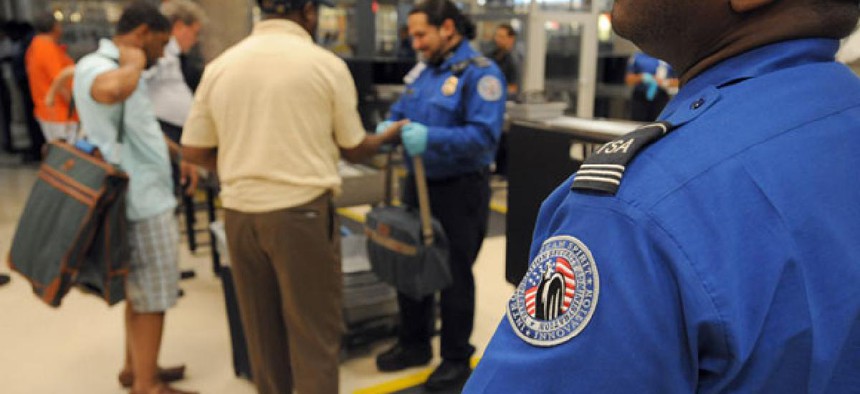TSA pays $245 million for smaller, faster body scanners

Erik S. Lesser/AP file photo
L-3 Communications, American Science and Engineering, and Smiths score contracts.
The Transportation Security Administration is dropping nearly a quarter of a billion dollars on compact, next-generation body scanners to better detect concealed explosives, such as the newfangled underwear bomb recently seized in Yemen. The imaging machines, like other upgraded systems, hide a passenger’s nude body from TSA officers by displaying generic representations of appendages with suspect items flagged.
Three five-year contracts paying out a combined total of up to $245 million have been awarded to L-3 Communications Corp., American Science and Engineering Inc. and Smiths Detection, according to government databases. The procurement documents released during the past week do not disclose the number of machines purchased or name the airports where they will be stationed.
Citizens frequently bash TSA for invading privacy and holding up checkpoint lines without improving security. Agency officials said the new body scanners will provide “enhanced threat detection capabilities and increased passenger throughput.”
In May, White House officials confirmed spoiling an apparent Yemeni-driven conspiracy to detonate hidden explosives that were more resilient than those worn by the failed underwear bomber on Christmas Day 2009.
The episode sparked questions about the ability of existing body scanners to spot more sophisticated combustible materials.
The procurement documents state the next-generation machines can discern both metallic and non-metallic items such as “weapons, improvised explosive device components and plastic threats.”
The Homeland Security Department, which supervises TSA, is partnering with A-T Solutions on a five-year, $46 million project aimed at countering homegrown IEDs, the contractor announced on Sept. 13.
Correction and update: An earlier version of this story overstated the amount TSA is paying for new body scanners; the correct figure is $245 million. The story also has been updated to report the Smiths Detection contract, which was announced after the article was originally published.






